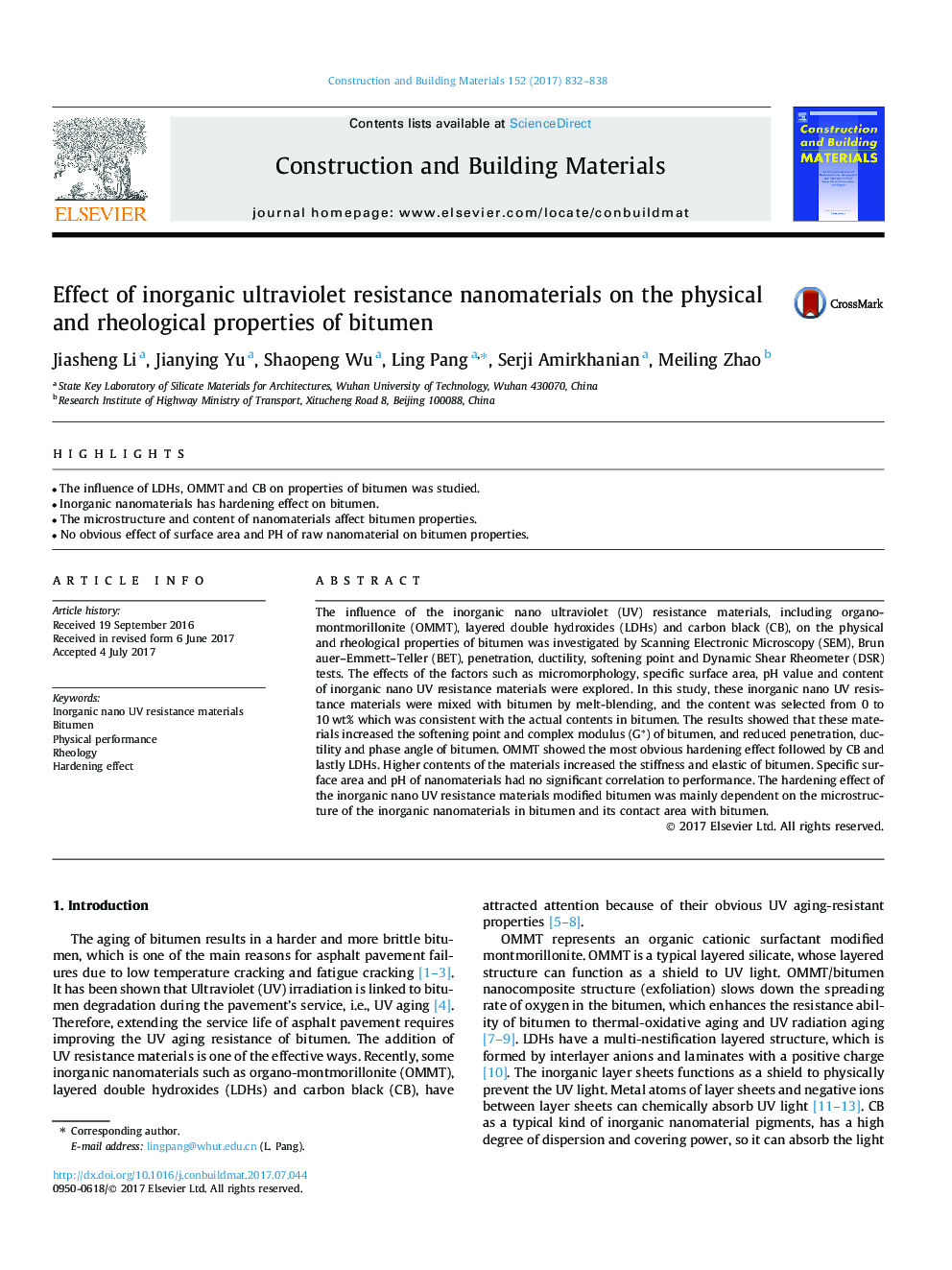| Article ID | Journal | Published Year | Pages | File Type |
|---|---|---|---|---|
| 4912814 | Construction and Building Materials | 2017 | 7 Pages |
Abstract
The influence of the inorganic nano ultraviolet (UV) resistance materials, including organo-montmorillonite (OMMT), layered double hydroxides (LDHs) and carbon black (CB), on the physical and rheological properties of bitumen was investigated by Scanning Electronic Microscopy (SEM), Brunauer-Emmett-Teller (BET), penetration, ductility, softening point and Dynamic Shear Rheometer (DSR) tests. The effects of the factors such as micromorphology, specific surface area, pH value and content of inorganic nano UV resistance materials were explored. In this study, these inorganic nano UV resistance materials were mixed with bitumen by melt-blending, and the content was selected from 0 to 10Â wt% which was consistent with the actual contents in bitumen. The results showed that these materials increased the softening point and complex modulus (Gâ) of bitumen, and reduced penetration, ductility and phase angle of bitumen. OMMT showed the most obvious hardening effect followed by CB and lastly LDHs. Higher contents of the materials increased the stiffness and elastic of bitumen. Specific surface area and pH of nanomaterials had no significant correlation to performance. The hardening effect of the inorganic nano UV resistance materials modified bitumen was mainly dependent on the microstructure of the inorganic nanomaterials in bitumen and its contact area with bitumen.
Related Topics
Physical Sciences and Engineering
Engineering
Civil and Structural Engineering
Authors
Jiasheng Li, Jianying Yu, Shaopeng Wu, Ling Pang, Serji Amirkhanian, Meiling Zhao,
